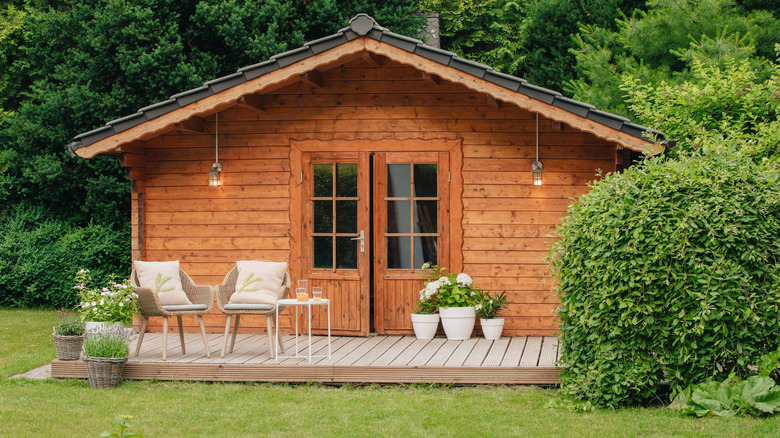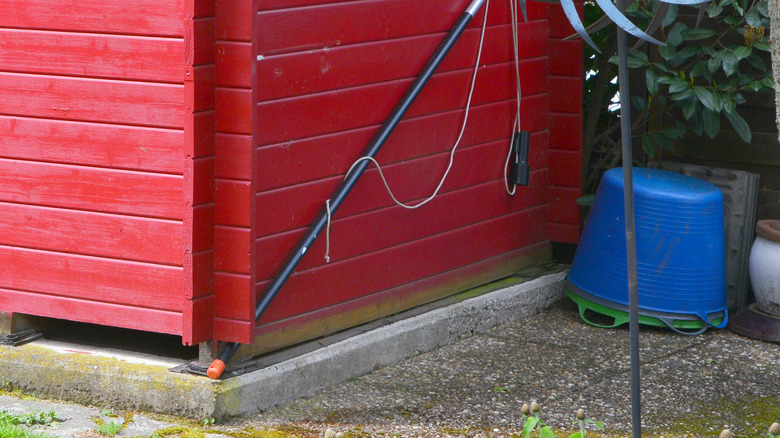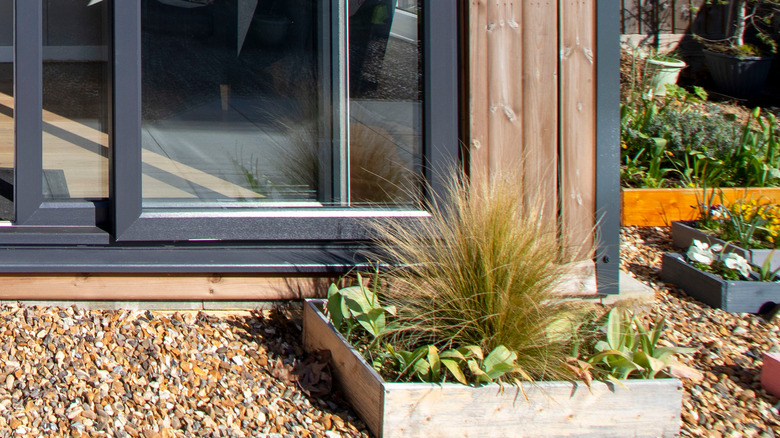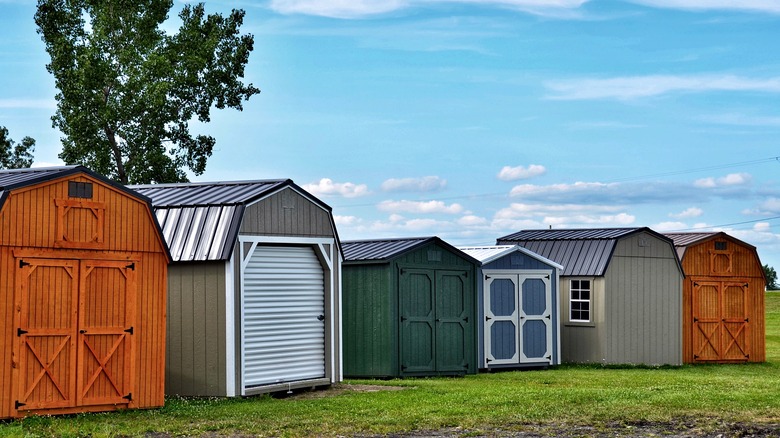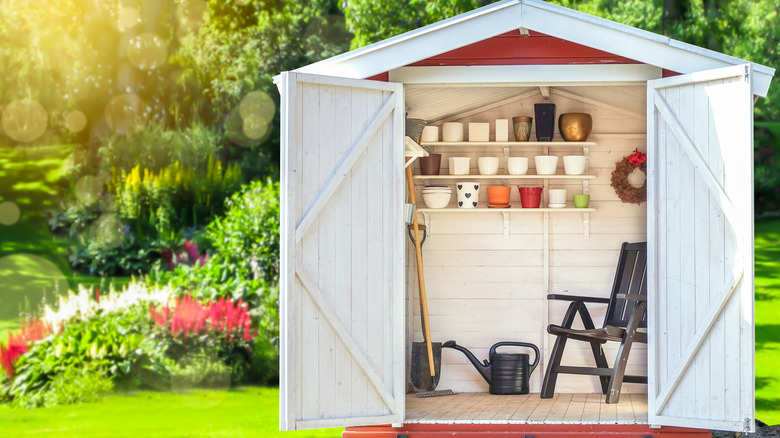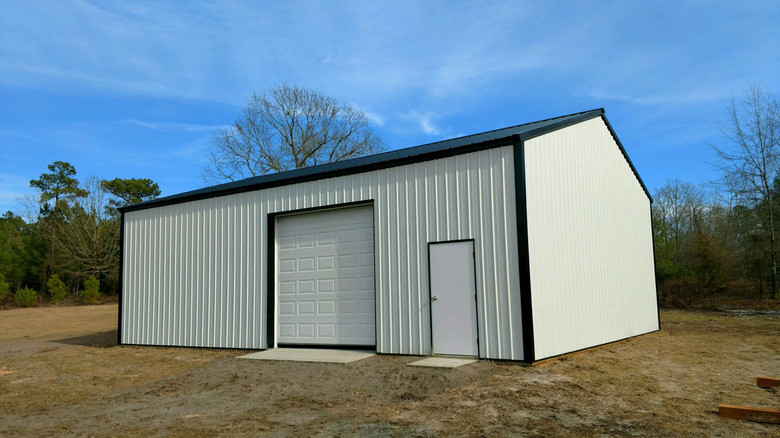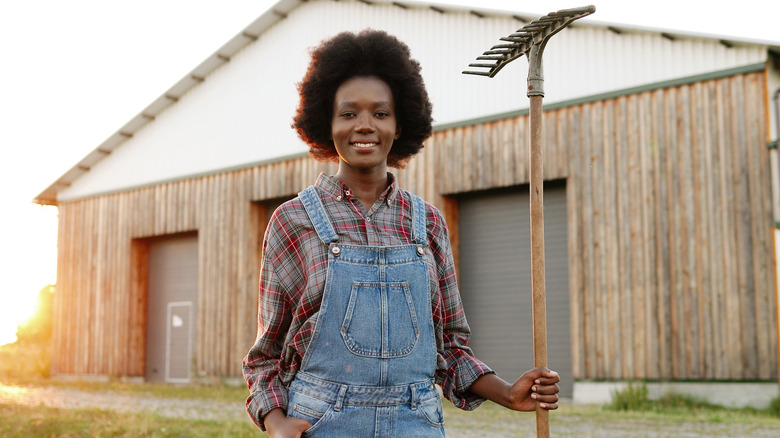How Much Does It Cost To Build A Shed From Scratch
Adding a shed to your property is a great way to introduce a new, external element that can serve a variety of different functions. Sheds can be large or small and purpose-built to fit your immediate and long-term needs. Families are finding the value of a storage shed for outdoor equipment and keepsakes, and many homeowners are even installing a new shed in their yard to create a detached workspace that can be customized to the exact specifications required of any type of job.
Angi estimates that a modern shed will cost between $5,000 and $16,000 depending on the size, style, and additional inclusions that you are seeking to bring to the project. With this investment in your yard, you can easily establish the foundation required to introduce expanded opportunities for important storage elements, the makings of a home workspace, and much more.
Adding a shed to the yard is a great option for any homeowner seeking a visual and operational transformation of their property and outdoor living area.
Factors for cost
Because the construction of a shed can take on so many different requirements, forms, and eventual tasks, the costs associated with the build can be influenced by any number of factors. However, regardless of your intended purpose, many of the foundational elements that make up the overall price remain constant.
The size of your project will change the material requirements
Size will always play a determining role in the overall cost of any construction project. The larger your shed, the more materials you'll need to finish the build and the longer it will take to assemble the structure. This adds budget considerations in two ways: First, you'll be purchasing more lumber, siding, and roofing elements (shingles, tiles, aluminum sheeting, etc.), but this also increases the time and associated labor costs that will factor into the final tally.
LawnStarter estimates that a 6x4 shed (providing a 24-square-foot floorplan) will range between $480 and $4,200, whereas a 10x12 (measuring out at 120 square feet) will typically cost between $2,400 and $21,000. Because the size of the shed plays such a large role in the overall cost, it's a good idea to really think about what you need the space for and select a floorplan that's appropriate for both your needs and budget.
Labor costs will play a role if you hire a contractor to complete the build
Of course, labor costs play a significant role as well. Many homeowners choose to hire a professional for the build because of the varied tasks involved in the job. As with many home improvement projects, building a shed is certainly something that you can do yourself, but a professional outfit will streamline the fabrication process and remove the headache for you.
When it comes to labor pricing, there will be a significant variance based on your specific location as well as the time of year that you engage in the project (as most general contractors won't be thrilled about the prospect of working outside in an Indiana or Vermont winter). Bob Vila estimates that a contractor will typically quote you a price that evens out to around $50 to $100 per worker per hour.
Geographical considerations can affect the cost as well
Angi reports that regional considerations play a role in the overall cost of building a new shed. For instance, Miami residents average a cost of professional assembly at $5,700 while homeowners living in New York or Seattle can expect to pay $7,300 and $6,700, respectively, for their shed builds. This has to do with regional labor cost calculations, material availability, and additional requirements based on your specific location. A shed built in a northern part of the United States will require more substantial weather-sealing than one built elsewhere, for example. Although, protecting your new shed from rodents, insects, and other animals is a must no matter where you live.
Additional costs
In addition to the typical cost factors, there are some additional elements that can raise the price; yet these installations can make for a far superior finished product that adds greater value to your property and functionality for your lifestyle.
Some installations will require a foundation, land clearance, and permitting
Typically, building a new shed will require you to rake out an existing section of grass and level it off to properly install the new structure. For small, prefabricated shed installation, you likely won't need to do much in the way of land clearance. However, when building a new and permanent fixture, or adding a much larger prefabricated structure to your property, clearing away the land and pouring a foundation may be an integral part of the build.
Early Experts suggest that larger builds may also require permits for the installation. Oftentimes, when a new project requires a foundation, it will also demand a permit and may even warrant inspections throughout or at the end of the build to ensure code compliance. This adds an additional wrinkle to the project; while permits aren't something that is likely to add much in the way of cost (Bob Vila estimates a figure of around $100 for any permitting needs), pouring a new foundation can add up pretty quickly. Angi reports that a concrete slab foundation typically costs between $4,000 and $12,300.
Electrical installations will raise the overall total
Shed designs come in many varieties, and for homeowners looking to make use of this space in a way that exceeds simple storage needs, the services of an electrician will certainly be required. Even the most basic structure will require a light source of some type, making electrical services something that should be included. However, for simple wiring, your contractor might be able to finish off the project without the addition of specialized professionals in the electrical field.
But a shed that will be used as an office space or in any other capacity that will see typical usage resembling habitation, you'll need to include more substantial electrical circuitry. Forbes Advisor estimates that an electrician will charge between $50 and $100 per hour to wire up outlets, sound or video systems, and other electrical essentials that will play a role in your new shed space.
A shed destined for some level of habitation will need plumbing, insulation, and furniture basics
If you're including living-oriented features in the shed, you will need to consider plumbing, insulation and drywall, and even some basic furniture in the finished product. These elements will make the space feel like it can promote routine lifestyle requirements. A homeowner building an external office space for themselves, for instance, probably won't be able to get much done if the shed remains an unfinished structure with bare walls and little in the way of lighting or other typical features that are prominent in an office (or any room of a home, for that matter).
Plumbing will give you the option to add a coffee maker, water fountain, or even a small bathroom, and typically costs $45 to $150 per hour (via HomeGuide). These finishing elements can transform an average shed into a workplace that supports efficiency and comfort.
Types of sheds
Sheds can be built to suit any particular need that you might have. Following the overall blueprint of one of these typical builds can help you make the most of your unique addition to the home.
Storage shed
A storage shed is perhaps the most utilized shed addition in the yard. A shed designed specifically as a storage space is quick and easy to put up, and many homeowners opt for a shed kit rather than a custom-built fabrication to keep costs low. HomeAdvisor estimates that an inexpensive plastic, wood, or aluminum-sided shed will typically cost between $300 and $3,000. Additionally, for a smaller shed, the need to include lighting can sometimes be eliminated (consider the difference between a walk-in and reach-in closet in terms of lighting needs).
Home office shed
The Guardian reports that English homeowners are becoming more and more interested in using garden sheds as a home office rather than a storage space for outdoor equipment and other belongings. A cottage industry of prefabricated shed designs that are built specifically for use in this instance is cropping up across the United Kingdom. This trend has carried over into other regional communities, and in the United States, people are getting in on the action as well.
The benefit of an office based out of a shed in your yard may not initially be obvious. But this construction allows you to remove your workspace from the primary residence in a way that an office conversion simply can't. Taking your work out to the backyard allows you to turn off in a meaningful way at the end of the day by providing some measure of commute that working in your primary living space can't offer. The physical separation of work and home is important (via Entrepreneur), even if that's only about a 10-step distance from the main portion of your property!
Farming-focused shed
Another type of shed that might serve an important role in your property and lifestyle is an agriculture-focused installation. Homeowners that make gardening a part of their routine lifestyle need a specialized place to store their equipment. Building a home garden has become huge for hobbyists in the United States as of late (via House Digest), and homeowners that are adding these features to their property are learning more about the importance of additional outdoor storage. As well, if you raise livestock, you may consider adding a shared space that includes a walk-in area for horses, sheep, or other animals as a solace from the rain or intense sunlight.
Consider the DIY route when installing a new shed
Building a shed yourself is a great option for any homeowner with significant construction chops or a penchant for DIY projects. If you have to pour a slab foundation, the project can become complicated. However, for smaller constructions that will be used primarily as storage space, the project is often as simple as building walls that link a fabricated floor and simple, sunken foundational beams. Structured Foundation suggests that a pier and beam foundation is often one of the most aesthetically pleasing underlayer elements that can be used to support a shed, deck, or even an entire house if built as a risen structure. Likewise, pouring concrete feet that will support the shed is far easier than laying a level slab foundation across the entire expanse of the future structure's footprint.
For a homeowner with confidence in their ability to start and finish the construction, taking on the build without professional help might be the best approach. However, any construction that extends beyond a somewhat simple design may very well be better handled by a contractor with a large volume of shed builds under their belt.
Why you need a shed on your property
A shed offers a versatile footprint for your home. It can be used to support activities like gardening or exercise and provides a secure storage facility for all kinds of belongings that you keep at home (via My Weekly).
Hobbyist and workplace support
A new shed offers a fantastic space for working or engaging in hobbies of all sorts. Adding a shed to your home gives you the ability to reimagine the space that you have available for projects, work, and hobbies, like gardening or woodworking. Its ability to provide a workspace and storage facility makes it a unique addition to any property, and one that can serve you in immensely positive ways.
Yard beautification
Another aspect of a shed on your property is the aesthetic value that it brings. There's something special about the look of a rustic — or even modern — shed. The Middle-Sized Garden suggests that even an uglier shed construction can be spruced up to bring this visual element to bear. This means that any kind of shed addition that you may be considering can easily be altered in a meaningful way that transforms the look and feel of your yard for the better.
Benefits of a shed in the yard
Adding a new shed to your property brings a visual element that can't be matched, but the benefits go far beyond the workspace and aesthetic qualities.
A shed can add significantly to your property value
Just about any renovation project or home improvement addition will add value to your property. Bob Vila estimates that a well-designed shed can add as much as 200% return on investment for a homeowner seeking to make this change in their yard. It's important to utilize high-quality materials and design the shed in accordance with the overall decorative theme of any outdoor living space you might have on the property, though.
Designing a tasteful shed that serves your needs is a surefire way to increase the property value while establishing a highly functional addition to your lifestyle in the short term.
Reducing clutter in your home or garage is a major bonus
Sheds provide a completely new storage area on your property. This is important because instead of expanding your existing storage, they add a brand new environment that can be customized to your home's specifications. Introducing shelving, plastic containers, and organizational tools will give you the ability to utilize this space in any way that you see fit.
With a brand new facility in your home, dedicating the space to a particular storage theme or use can help you make room to retool other storage spaces as well. In addition, a shed that takes on dual functions and provides a platform for work or other needs can help you declutter your mind as well as the physical space of your home.
